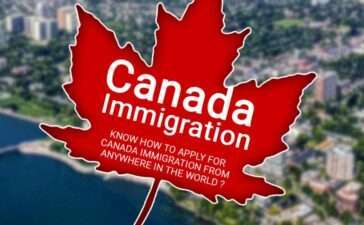If your country of citizenship requires a visa, then you must apply for a work permit before being allowed to legally work or study in Canada.
As a temporary foreign worker in Canada, you have two choices for work permits: open work permits and employer-specific work permits.
Applying for a Work Permit
Most individuals wishing to work in Canada require a work permit. This process typically involves receiving an offer of employment and receiving approval from Labour Market Impact Assessment.
Most foreign workers in Canada obtain work permits through the Temporary Foreign Worker Program. To be employed in Canada, these permit holders must be hired by an employer who has obtained a Legal Migration Identification Authority from the government.
These permits are issued for a specific duration and may include either an open or employer-specific work permit. The former enables workers to work anywhere within the country with any employer, while the latter only permits them to work for one specific employer.
Application processes typically take up to 9 months, though this time frame may differ depending on the type of permit someone applies for. Once approved, a work permit can be extended up to 48 months in total.
Getting a Job Offer
Acquiring a job offer is one of the most crucial steps in immigration to Canada. Not only does it increase your likelihood of receiving an invitation to apply for permanent residence, but it will also raise your Comprehensive Ranking System (CRS) points.
A job offer can also increase your opportunities of being interviewed by Canadian employers who are searching for foreign talent, as well as helping you obtain a visa to work in Canada.
However, be wary of unscrupulous employers who may issue fake job offers to immigrants in an effort to take advantage of them. Be wary and always make sure your employment offers are in writing.
It is essential to update your resume and cover letter, as these documents are the first things employers look at when hiring a new employee. In these documents, you should include information regarding your educational background, accomplishments, as well as employment history.
Completing the Application
When applying for a work permit in Canada, you must submit certain documents. These include an LMIA letter from Employment and Social Development Canada, an offer of employment from your employer, as well as proof that you meet all necessary entry criteria.
You must demonstrate that you have sufficient money to support yourself and your family in Canada. To do this, submit records of your financial status and cash flow from the past 12 months.
Applying for a work permit in Canada is typically straightforward and should take only some effort if you plan ahead and prepare all required documents in advance.
Once you obtain a work permit, there are specific regulations regarding your employment that must be adhered to; these include how long you can stay in Canada and the number of days or weeks of work per month. There are exceptions to these rules such as those applied in the agriculture and education sectors.
Getting a Visa
If you are considering working in Canada, it’s essential to be aware of the various visa and work permit options available. Each program has its own specific requirements and conditions so it’s imperative that you know what you are getting yourself into before applying.
One of the most prevalent visa types is a work permit. This permits workers to come and live in Canada with the potential of applying for permanent residency after fulfilling certain criteria during an agreed-upon period of time.
To obtain a work permit in Canada, applicants must receive an offer of employment from an eligible Canadian employer. This must then be confirmed through ESDC’s Labor Market Impact Assessment (LMIA).
There are two primary types of work permits – open and employer-specific. An open work permit allows foreign workers to switch employers without restriction, while an employer-specific permit requires a job offer from an eligible Canadian employer.




